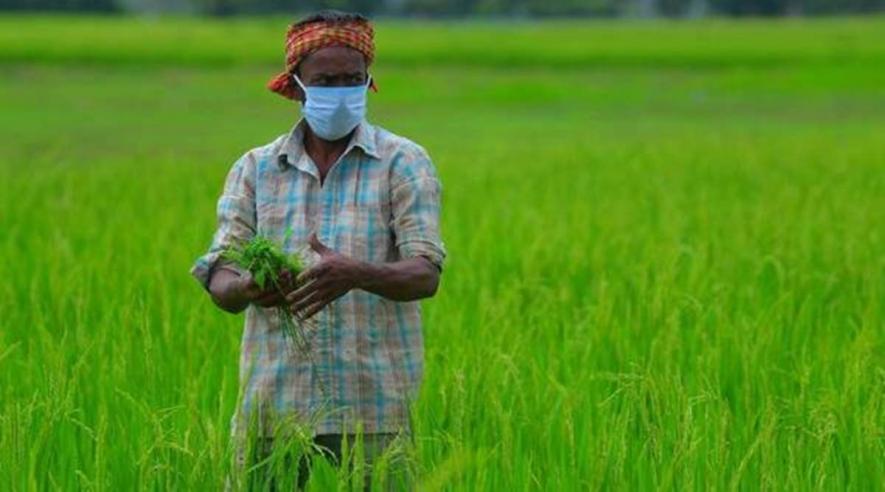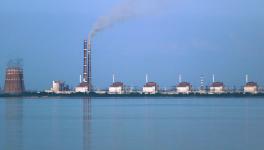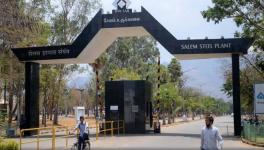Need for Fertiliser Policy and Self-reliance with CPSEs: PCPSPS

Image for representational purpose. Credit: The Indian Express
Pointing to the increasing cost of mineral fertilisers in India and the threat of global supply chain disruptions, the People’s Commission on Public Sector and Public Services (PCPSPS) has demanded that the government put in place a fertiliser policy and nurture public sector enterprises (PSEs).
The PCPSPS is a collective of eminent academics, jurists, erstwhile administrators, trade unionists, and social activists. Its members include experts such Thomas Isaac, E A S Sarma, S P Shukla, Indira Jainsing, C P Chandrasekhar, R Nagaraj, and Prabhat Patnaik among others.
A statement by the PCPSPS said, “The global fertilizer situation and demand for fertilizers from most agrarian countries in the context of the rise in energy and gas prices, Covid 19 pandemic, and the ongoing Ukraine war have become more vulnerable than ever before. Both availability and price of mineral fertilizers are at stake.”
It further read: “The small and marginal farmers are the worst affected. They constitute more than 80% of India’s agricultural sector, and paying high prices for fertilizers in the black market will hurt their incomes. Further, if they opt to not use fertilizers, crop yields will drop substantially and will drive food prices higher and worsen the already high inflation pushing 15 % of the country’s poor into acute poverty and hunger.”
The statement highlighted the need to recognise the strategic nature of the domestic fertiliser industry and stated that the need of the hour is to build up self-reliance by nurturing the central PSEs rather than dismantling them through investment – as has been the policy since after the economic liberalisation.
The statement has collated 14 demands and suggestions that focus on “a steadfast action plan” to increase domestic production, promotion of low-nutrient fertilisers for better absorption, and use of agricultural waste, among others.
Read the full statement below:
Fertilizer sector: Crisis demands strengthening domestic production through PSEs
The global fertilizer situation and demand for fertilizers from most agrarian countries in the context of the rise in energy and gas prices, Covid 19 pandemic, and the ongoing Ukraine war have become more vulnerable than ever before. Both availability and price of mineral fertilizers are at stake. India’s food grain production touched a remarkably high 308.65 million tonnes during 2020-’21 and almost 50 to 55 % of the additional grain production is directly contributed to the application of mineral fertilizers. It has also played a major role in the success of India's green revolution starting in the 1980s and helped the country to attain food self-sufficiency by 2000. As a result, the demand of fertilizers has witnessed significant year-to-year growth over the past several years on account of which the domestic industry expanded. Import of fertilizer products and inputs that are not domestically available have also increased substantially.
Globally, India is the second-largest fertilizer-consuming country, the third-largest producer and the largest importer of fertilizer materials. Still, the per hectare application of mineral fertilizer in India remains much lower than in most of the developed and emerging economies.
In the last 30 years, consumption of fertilizer materials was growing at a CAGR of 3.3 % whereas production grew only by 2.18 % necessitating huge imports which grew at an astonishing 5.81 % during the same period. In the last decade since 2011-’12 production grew only by 1.13% CAGR.
Following the retention pricing policy (RPS) and the encouragement given to public and private companies in the 1980s and up to 1995 the country attained self-sufficiency in urea production in the year 2000. During this period fertilizer production which was mostly a public sector manufacturing activity slowly drifted towards the private sector following a lack of expansion of public sector units and also due to the closure of some of the operating units.
In the wake of the liberalized economic policies, it was decided that no major government investment is needed in the public sector. Due to this change in government policy, there have been no major new investments since 1995 in the fertilizer sector also. Consequently, imports increased leaps and bounds to satiate the farmers’ demand. In the meantime, in 2002 several plants which operated on coal, naphtha, fuel oil, and lignite were closed down on account of high specific energy consumption and increased cost of production. This also reduced the domestic availability leading to higher imports.
Efforts by the government to encourage fertilizer companies to put up manufacturing facilities abroad where raw material is cheap and bring it to India with a view to reducing fertilizer imports though successful initially later faded off. Attempts to procure and develop potash mines abroad also did not bear fruit. During the last two decades, there were several tinkering with the fertilizer policy, but none of them were able to infuse new investments in the sector or reduce the subsidy burden on the government. Some of the major private players in the fertilizer business also left the scene on account of unfriendly policies of the government and inordinate delay in the disbursement of subsidy amounts hitting them hard on working capital requirements. With the partial decontrol of pricing and introduction of nutrient-based pricing in 2008, the farmgate price of phosphatic and potassic fertilizers went up sharply and severely strained the farmers.
The government’s efforts to attain better nutrient use efficiency of applied fertilizers in the field based on nationwide soil testing and balanced administration of fertilizers did not gather momentum. Promotion efforts toward large-scale use of compost and farmland manure biofertilizers, fortified fertilizers, and micronutrients also did not succeed as intended. Though the sector underwent all the strains associated with the neo-liberal policies of the government, it could not transform itself by absorbing the new trends, scientific advancements and strategies which occurred in the production, crop nutrition and use of mineral fertilizers around the world.
The small and marginal farmers are the worst affected. They constitute more than 80% of India’s agricultural sector, and paying high prices for fertilizers in the black market will hurt their incomes. Further, if they opt to not use fertilizers, crop yields will drop substantially and will drive food prices higher and worsen the already high inflation pushing 15 % of the country’s poor into acute poverty and hunger.
The situation has also brought trouble to the government. Ever since energy and gas prices become volatile in 2019-20 the domestic cost of production and imported prices have gone up considerably resulting in a steep hike in the subsidy pay out. While it was of Rs 83,000 crore during 2019-20, which increased to Rs 1.38 lakh crore during 2020-21 and to Rs 1.62 lakh crore during 2021-22. In the current situation, it is expected to cross Rs 2.5 lakh crore during the current FY 2022-23 which will certainly upset the fiscal balance of the union government.
Following economic liberalization, as a result of the government’s reluctance to make new investments in the public sector, the CPSE fertilizer production facilities have got neglected, leading to many units being closed down for one reason or the other. In between some of the units like PPL were privatized. The present situation demands a rethinking of the above policy.
Still, the planners were blissfully indifferent to it, as is evident from the recent announcements (as recent as on May 28, 2022) coming from the Ministry of Finance on its resolve to disinvest National Fertilizers Ltd, Rashtriya Chemicals & Fertilizer Ltd, Madras Fertilizer, Fertilizer Corporation of India, Brahmaputra Valley Fertilizer Corporation and Hindustan Fertilizers Corporation, as also MMTC which imports fertilizers and raw materials. It shows that either the Ministry of Finance is in a total disconnect with the realities of the global developments and the need to do everything necessary to safeguard food security or it has deliberately chosen to act against the national interest, in its undue exuberance to sell away the valuable CPSE assets to private companies.
We request the Centre to understand the global developments in the availability of fertilizers and the raw materials required for fertilizer production and quickly put in place a fertilizer policy, recognizing the strategic nature of the domestic fertilizer industry and the urgent need to build up self-reliance by nurturing the fertilizer CPSEs, rather than dismantling them through disinvestment.
In the present situation, the cost of mineral fertilizers is increasing leaps and bounds and its availability is also threatened on account of global supply disruptions. At the global level, a sense of food insecurity is also forecasted in the long run by several informed agencies. We need to ensure both the availability and affordability of fertilizers at all costs to farmers to sustain food grain production for which the following points may be considered.
- In the wake of the Ukraine war, the much-criticized administered pricing system for urea prevailing since 1978, has come up to save the farmers and the industry in the country. Even the part decontrol of phosphate and potassic fertilizers also shielded the farmers from the huge price rise, these days, in the international markets.
- The government shall have a steadfast action plan to increase in domestic production of fertilizers. As ammonia, the major fertilizer input is slated to become a fuel of the future for long-distance hauling, its production will serve the twin purposes of production of fertilizers and as a reserve fuel.
- Preferential allocation of natural gas to the fertilizer sector may be restored. Now the sector gets domestic gas after allocation to household consumption and for automobiles.
- Withdraw all activities towards privatization of fertilizer PSEs and undertake their systematic expansion and diversification.
- More diligent use of available (indigenous and imported) urea and DAP is the need of the hour. The Govt has done certain efforts in the past years to achieve a balanced and scientific application of mineral nutrients in our farmlands. Here only partial success is achieved. A more concerted action plan for effective soil testing and fertilizer administration is warranted not only to conserve costly fertilizers, and reduce its waste but also to ward off its leaching and consequential environmental problems.
- Low nutrient content fertilizers such as ammonium sulphate, mono ammonium phosphate may be promoted so that there is no excessive nutrient application and the plant absorbs almost all the nutrients supplied during the cropping season itself without any wastage.
- Existing fertilizer plants may have the capability to produce beyond their nameplate capacities. Production beyond the assessed quantum was not encouraged earlier to avoid investors ‘gold plating’ to claim more capital subsidies under the administered pricing mechanism (APM). In the renewed situation all producers may be encouraged to produce whatever possible to tide over the prevailing exorbitant import prices, especially in the wake of the Ukraine war.
- Fast commission the urea plants under construction. Ramagundam fertilizers and HURL, Gorakhpur have started operations, HURL Baruni is expected by June this year, Talcher unit is set to become operative by end of 2024. Have a dedicated effort to fast-track the commissioning and operation of these projects.
- Urban and City compost may be given a renewed thrust to meet part of our nutrient demand. Encourage more and more municipalities and corporations to mandatorily implement such projects. This will not only render cities and neighborhoods clean but also provide low analysis fertilizers for horticulture etc.
- Try blending Urea and DAP with city composts so that better assimilation by the plant is rendered easy. Indirectly it will reduce the wastage of concentrated fertilizers
- Have a nationwide program to promote the use of agricultural wastes, green leaves and farmland manure as readily available sources of manure for crops.
- Promote an effective utilization of low-grade rock phosphate deposits available in the country (Rajasthan etc) through advanced beneficiation etc.
- Gypsum from salt pans contains several plant nutrients and is used as manure and also in cement plants. The use of this material as manure may be incentivized and instead cement plants may be directed to use phospho-gypsum or mined gypsum.
- The ammonia industry in the country has amassed vast expertise in the design, execution, handling, storage, and safety of handling hydrogen. This strength may be used and the fertilizer sector may give a responsible role in National Hydrogen Mission in its developmental efforts.
Read the enlarged statement online here: https://reclaimtherepublic.co/2022/06/05/indian-fertilizer-scenario-may-2022/
Get the latest reports & analysis with people's perspective on Protests, movements & deep analytical videos, discussions of the current affairs in your Telegram app. Subscribe to NewsClick's Telegram channel & get Real-Time updates on stories, as they get published on our website.



















